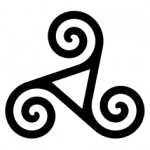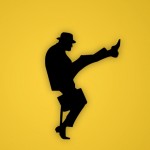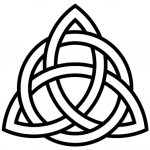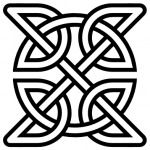New Beating Patterns
 Some time ago I was working drawings of beating patterns. In earlier messages I showed my version of the three-beat and four-beat patterns. Here are some new patterns. To start with, here is the two-beat pattern:
Some time ago I was working drawings of beating patterns. In earlier messages I showed my version of the three-beat and four-beat patterns. Here are some new patterns. To start with, here is the two-beat pattern:
 Some time ago I was working drawings of beating patterns. In earlier messages I showed my version of the three-beat and four-beat patterns. Here are some new patterns. To start with, here is the two-beat pattern:
Some time ago I was working drawings of beating patterns. In earlier messages I showed my version of the three-beat and four-beat patterns. Here are some new patterns. To start with, here is the two-beat pattern:
 Last week, I showed a first version of the animation of beating patterns. The application is more extensive now. You may find the new animation here (sorry it’s in Dutch).
Last week, I showed a first version of the animation of beating patterns. The application is more extensive now. You may find the new animation here (sorry it’s in Dutch).
 At the conservatory where I teach, I often see the students have difficulty learning a good beating technique. In the books on beating technique there are pictures of beating patterns. These pictures indicate the directions in which to move. But they do not indicate the speed of the movements. The pictures cannot convey the ‘bounce’ in the beat. Therefore, the use of the books in learning a good beating technique is limited.
At the conservatory where I teach, I often see the students have difficulty learning a good beating technique. In the books on beating technique there are pictures of beating patterns. These pictures indicate the directions in which to move. But they do not indicate the speed of the movements. The pictures cannot convey the ‘bounce’ in the beat. Therefore, the use of the books in learning a good beating technique is limited.
 You learn from your mistakes. Sometimes you can even learn from mistakes made by others, which is the case with conducting technique. To learn to beat in a good way, it is useful to study bad conducting, to be able to see your own technique clearly.
You learn from your mistakes. Sometimes you can even learn from mistakes made by others, which is the case with conducting technique. To learn to beat in a good way, it is useful to study bad conducting, to be able to see your own technique clearly.
Below is the four beat pattern depicted once more. The way this is drawn is not the only true pattern. But the pattern does combine a couple of good qualities, as I have tried to show in a previous post:
 Like I said in the previous post, I’m busy drawing beating patterns. I just finished the pattern with three counts in a bar, like the 3/4 and 3/8 time signatures.
Like I said in the previous post, I’m busy drawing beating patterns. I just finished the pattern with three counts in a bar, like the 3/4 and 3/8 time signatures.
Below is the three beat pattern that is legato. That is, the movement on all beating points is rounded, to create a flowing sound from the musicians:
 In conducting, it is important to make fluent movements. Making the patterns really legato isn’t easy. Good drawings of the beating patterns may be helpful in the learning process. Much to my surprise, the drawings in existing books on conducting look rather bad. They are more schemes pointing in the right direction than drawings of how the actual movements should look like. Thus, I took the challenge of creating beautiful drawings of the beating patterns.
In conducting, it is important to make fluent movements. Making the patterns really legato isn’t easy. Good drawings of the beating patterns may be helpful in the learning process. Much to my surprise, the drawings in existing books on conducting look rather bad. They are more schemes pointing in the right direction than drawings of how the actual movements should look like. Thus, I took the challenge of creating beautiful drawings of the beating patterns.
In this post we are focusing on the first one, the legato 4-beat pattern. (This is the pattern you use when there are four beats in the bar, like in the 4/4 time.) With the term legato I mean in this case that you are making fluent movements on all four beats.
 In conducting, you are using the hands to indicate different kind of expressions. For a soft sound, the palms are turned downwards. And for a large sound, the palms are turned upward. For a tender sound, you keep your hand relaxed and for a powerful sound, you make the hand solid. If you want to ask for a precise timing, you put together your thumb and indicating finger. Each pose has a different meaning.
In conducting, you are using the hands to indicate different kind of expressions. For a soft sound, the palms are turned downwards. And for a large sound, the palms are turned upward. For a tender sound, you keep your hand relaxed and for a powerful sound, you make the hand solid. If you want to ask for a precise timing, you put together your thumb and indicating finger. Each pose has a different meaning.
However, sometimes you don’t want to give any expression at all, but rather you would like a neutral sound. This might be at the warm-ups for example, or while rehearsing difficult notes. What neutral pose would be suited for such a moment?